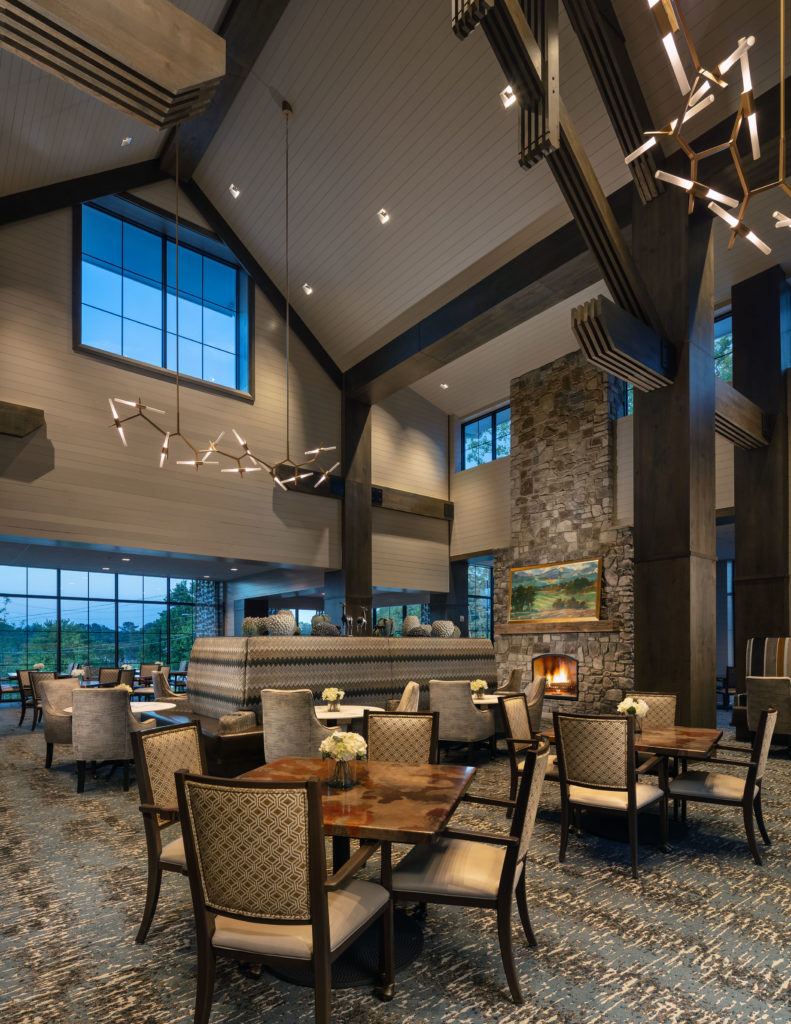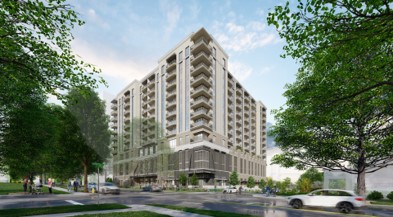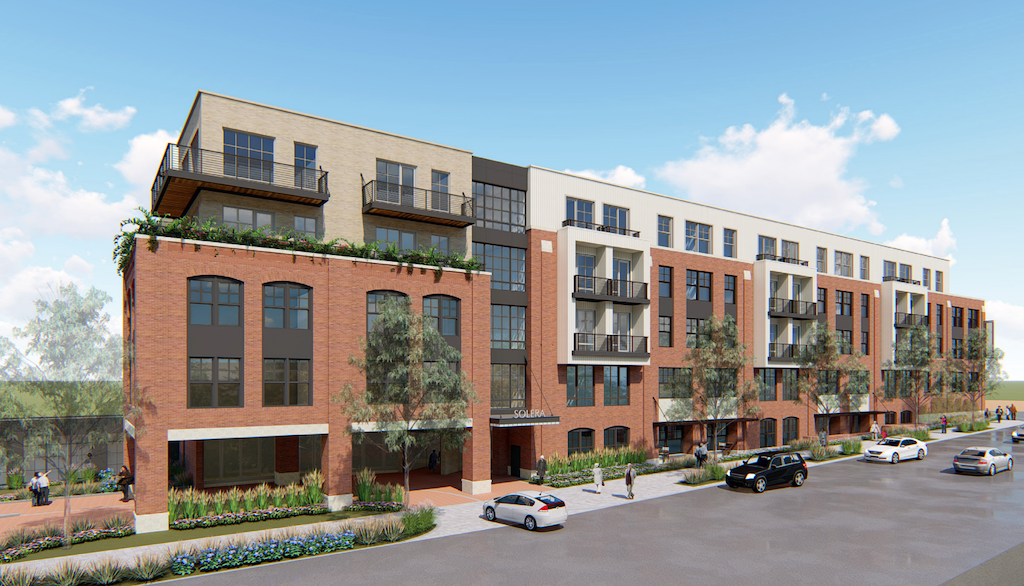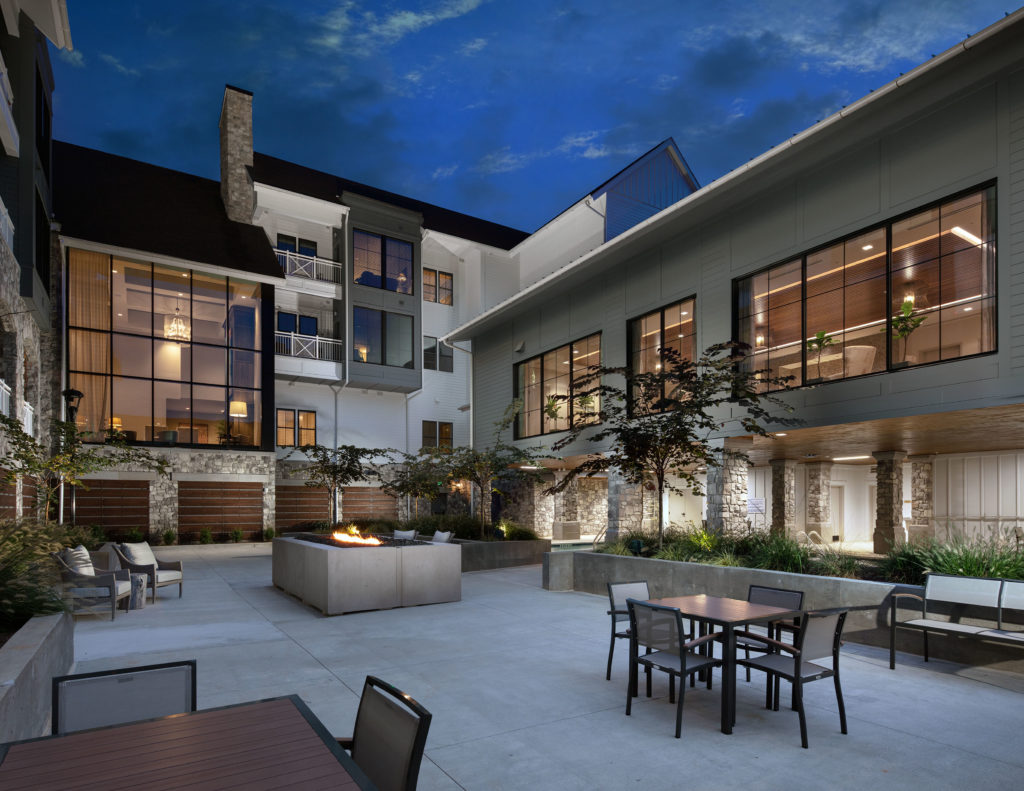Covid-19 slowed senior housing construction, but new properties continue to rise and open in many markets across the United States.
In fact, a steady stream of new community openings contributed to senior housing occupancy remaining at a record-low 78.7% in the second quarter of 2021, according to NIC MAP Vision.
Now, more developers are moving forward with projects after delaying groundbreakings and in-progress construction due to disruption in the pandemic’s early weeks in the spring of 2020.
Some markets will be impacted harder by the uptick in development than others — and some of these markets already are struggling with low occupancy, not only from Covid-19, but from oversupply in the years preceding the pandemic.
But developers and operators are betting that demographic trends, particularly population growth, will remain favorable and support lease-ups, full buildings, and more opportunities for growth.
Senior Housing News obtained construction and occupancy numbers from NIC MAP Data, powered by NIC MAP Vision, along with recent population numbers and projections for three selected metros, to provide a look into the development landscapes within a few such markets.
These are locations that are hotbeds of development and that also feature noteworthy communities under construction, including some large and innovative projects.
Atlanta
Average senior housing occupancy: 74.8%
New construction as a percentage of total inventory: 10.7%
Population growth: The 21-county metro Atlanta region is expected to total 8.6 million people by 2050, according to data analysis from the Atlanta Regional Commission.
Atlanta’s population growth is among the strongest in the country. It has been among the top five metropolitan statistical areas (MSAs) in positive net migration from 2015 to 2019, and its growth from 2010 to 2019 was the fourth largest among U.S. MSAs.
It is also an aging population. The over-60 age cohort accounts for 18.1% of the metro region’s total population, while the 50 to 59 age demographic accounts for 13.4% of the total regional population.
Market overview: Atlanta has been active with senior housing development for years, in part because of steady demand for senior housing and low barriers to entry. But there has been a high rate of new supply coming online, resulting in uneven performance across submarkets.
Although the pace of new development has slowed, the rush for opportunities and the continued construction activity may continue to have a negative impact on occupancy rates. Atlanta’s senior housing occupancy in Q2 2021 is among the lowest in the country.
Alpharetta, Georgia-based Phoenix Senior Living is one of the largest providers in the Atlanta metro area, but the company has been concentrating on growth in other markets in recent years due to the market dynamics.
“Pre-Covid, Atlanta was voted the toughest senior housing market two years in a row — that’s not an award you want to win,” Phoenix CEO Jesse Marinko told Senior Housing News.
Now, though, he believes the climate is improving in Atlanta and other southeastern markets where Phoenix operates, in part due to increased in-migration during the pandemic.
“You’re seeing it the last six months — our absorption has been record setting, as far as number of move-ins per month,” he said. “Now, unfortunately, when you’re just trying to get back to the [occupancy] norm, you’re probably not fist pumping as hard as you should.”
 Jim Roof Creative
Jim Roof CreativeNotable projects:
Village Park Milton in Alpharetta won the Best Assisted Living Design category in the 2021 SHN Architecture & Design Awards. The community’s owner and operator, Galerie Living, specializes in private-pay communities with a continuum of care, with three properties in the Atlanta area. Other submarkets Galerie Living operates in include Atlanta’s Buckhead neighborhood, with a project in pre-leasing now under the Corso brand. That brand is a luxe product, offering what CEO Tim Gary calls “five-star service” on a rental rather than entrance-fee basis. While monthly rates for Village Park buildings average around $6,000, rates at Corso will be closer to $12,000 a month. The demand for that price-point is robust, Gary said. “We’re going to open it 40% pre-leased, and it’ll track the same as all our other projects … we’ll be right at 90% within 12 months.”
Indeed, Galerie is not the only company perceiving unmet demand for luxury living in the Buckhead area: A highrise community being developed in Buckhead by Caddis includes independent living, assisted living and memory care services, and amenities including all day dining, sun decks, swimming pool, theater, and a rooftop bar and lounge. Heartis Buckhead is scheduled to open in the spring of 2022.
Another high-profile development is The Outlook at the Exchange from Capitol Seniors Housing. This four-story, 180-unit active adult development is part of a larger $350 million mixed-use development in Buford, Georgia. In addition to on-premise amenities including a theater room, fitness center, sports lounge, yoga studio and courtyard, residents will have access to the master development’s shopping and nightlife when it opens in late 2022.
Zimmerman Properties and TriStar Alliance are building Villas at Mt. Zion in Clayton County, Georgia, immediately south of Atlanta. The Villas at Mt. Zion is a 96-unit, affordable, 55-plus independent living community, and will be located next to an adjacent affordable multifamily development, Flats at Mt. Zion.
Charlotte
Average senior housing occupancy: 79.1%
New construction as a percentage of total inventory: 3.7%
Population growth: Charlotte’s population increased nearly 20% from 2010 to 2020, and the Queen City surpassed San Francisco as the 15th most populous city in the U.S. The Charlotte Regional Business Alliance projects the metro Charlotte area’s population to nearly 4.6 million people by 2050.
Population gains in urban areas such as Charlotte paced North Carolina’s population growth over the past decade, and the state is losing population in rural areas: 51 counties lost population between 2010 and 2020, WUNC reports.
The median age is 34.2 years, and nearly 20% of the metro Charlotte region is age 60 and over, according to Census Bureau data.
Market overview: Charlotte’s growth is an example of the “18-hour-city:” mid-sized cities –typically with populations under 1 million people – with robust population growth; lower costs of living; and appealing amenities for longtime and newer residents.
An annual real estate report from the Urban Land Institute and PwC highlighted the growth of 18-hour cities as a top trend for 2021.
In addition to their population growth, these markets are attractive to real estate developers and investors because the cost of doing business is lower than in major metropolitan areas, and local governments are more business friendly, attracting a higher than average number of smaller and start-up businesses.
And Phoenix’s Marinko believes that these cities — several of which are in the Southeast — are even better prospects now than they were pre-pandemic, as their quality of life is attractive to people who now can work remotely and relocating.
“We’ve seen a pretty rapid growth, if you look at the housing numbers, through Nashville, Chattanooga, Birmingham, Atlanta, Charlotte — there’s [been] a couple times in the past year and a half, you couldn’t find a home,” Marinko said. “And if you found a home, there’s 25 offers on it — [sometimes] sight unseen, all-cash offers.”
Notable projects:
Senior housing construction in Charlotte lags the other markets selected for this story, but that may soon change. Middle-market, 55-plus developer and operator Clover Group, which struck a joint venture with Welltower (NYSE: WELL) in 2019, is moving forward with plans to build as many as 10 new communities in the region over the next several years, Charlotte Business Journal reported in April.
Through a vertically integrated development and operational model, Clover creates “independent living light” communities at a middle-market price point. But the company typically does not follow the typical development trends in a hot market, and build its communities in the areas with the most new construction. Rather, it seeks sites near older, established suburbs, to serve people who want to remain in those areas as they age.
“You can’t just take these projects and say, ‘Okay, the growth is east so we’re going to go out there because it’s easier, because there’s a lot of land. Farmland is being bought and rezoned in single-family and multifamily, we’ll just go buy a multifamily part,’” Clover CEO Michael Joseph said, in an interview for SHN’s Changemakers series. “Because nobody is living out there. The seniors won’t go there because it’s not where they live. They live closer to the older suburbs.”
 Courtesy of Bridgewood Property Company
Courtesy of Bridgewood Property CompanyLower-acuity senior living development is hot in Charlotte, with other notable firms including Bridgewood Property Company, which started construction in July on The Village on Morehead, a 12-story, 200-unit luxury independent living community. The 12-story building will offer convenient access to Charlotte’s top medical providers, and Bridgewood will partner with some home health providers.
Finally, Accesso, traditionally an office building and multifamily operator and manager, announced plans to open a 200-unit active adult community with an amenities package including a grand lobby and clubhouse, library, demonstration kitchen, private dining, a movie theater and event space, fitness center and yoga room, private courtyard and grilling pavilion, outdoor living room, fire pit and a resort-style swimming pool and pool deck.
Washington, D.C.
Average senior housing occupancy: 81.2%
New construction as a percentage of total inventory: 7.6%
Population growth: The metro Washington, D.C. area’s population was almost 5.4 million people in 2020, and is projected to grow to 7.4 million by 2030.
According to analysis from DC Health Matters, nearly 13% of the population is age 65 and older, and the 55 to 64 age cohort accounts for almost 10% of the population.
Market overview: The overall population growth in the D.C. area will be bolstered further by Amazon, which is building its second headquarters in nearby Arlington, Virginia. The e-commerce giant, which already employs 1,600 people in the city, is expected to hire another 1,900 workers. Amazon estimates HQ2 will create 25,000 new jobs in the metro over the next decade.
The pending arrival of Amazon HQ2 is fueling multifamily construction. The metro Washington, D.C. area has over 43,000 new apartments under construction, according to Yardi Matrix data analyzed by MultiHousing News. This accounts for 6.9% of existing stock.
These major developments solidifies Washington’s status as a gateway market serving as a hub for economic growth for the region.
The nation’s capital also has been a pioneer in the World Health Organization’s Age-Friendly Cities movement, pursuing a range of policies related to the built environment; changing attitudes about growing older; and lifelong health and security.
As part of that effort, D.C. will “explore and develop options for expanding the supply of neighborhood-scale assisted living for D.C. residents with incomes below 50% area median income,” according to the city’s strategic plan.
Notable projects:
In recent news, Maplewood Senior Living is expanding its luxury Inspir brand to the District. The operator and its development partner, Omega Healthcare Investors (NYSE: OHI) acquired The Fairfax Embassy Row in DuPont Circle, and plans to reposition it as Inspir Embassy Row, an eight-story, 174-unit building.
The Inspir brand got its start with a Manhattan highrise that has captured headlines for bringing luxury senior living the Big Apple. The expansion of this brand to D.C. highlights that some of the nation’s top investors, developers and operators see opportunities for high-end product in this market.
This is reflects in other projects underway in the market, including Modena Reserve at Kensington, a $75 million, 135-unit community offering independent living, assisted living and memory care in Kensington, Maryland. The development marks the first senior housing development from Chicago-based real estate developer and services firm McCaffery Interests, in partnership with Solera Senior Living.
 Courtesy of McCaffery Interests and Antunovich Associates Architects
Courtesy of McCaffery Interests and Antunovich Associates ArchitectsMcCaffery CEO Dan McCaffery told SHN in 2019 the firm decided to enter senior housing with this project because “development follows demand.”
And Evanston, Illinois-based nonprofit provider Mather is developing The Mather, a $475 million life plan community in Tysons, Virginia. The project is 70% pre-sold, Mather President and CEO Mary Leary told SHN in Oct. 2020.
Furthermore, Galerie Living has chosen D.C. as the location for its first community outside the Atlanta metro. The company is bringing its luxury Corso product to the market. While Gary believes that the robust construction activity could pose challenges for more typical, standalone IL or AL product, he thinks the market is hungry for differentiated projects at other price points.
“It’s a great market, it’s underserved — it’s underserved because of the time it takes to develop anything in that market, and just the complexity of that market,” he said. “It’s easily a three- to five-year timeframe just to open the doors of a project, which is a long time.”
One of the nation’s largest senior living providers, Sunrise Senior Living, is headquartered in the area, and is planning an 86-unit senior housing community in Tenleytown, on the northwest side of the District. This project is notable in part because Sunrise partnering with Wisconsin Avenue Baptist Church on the development, which also includes a new church.


